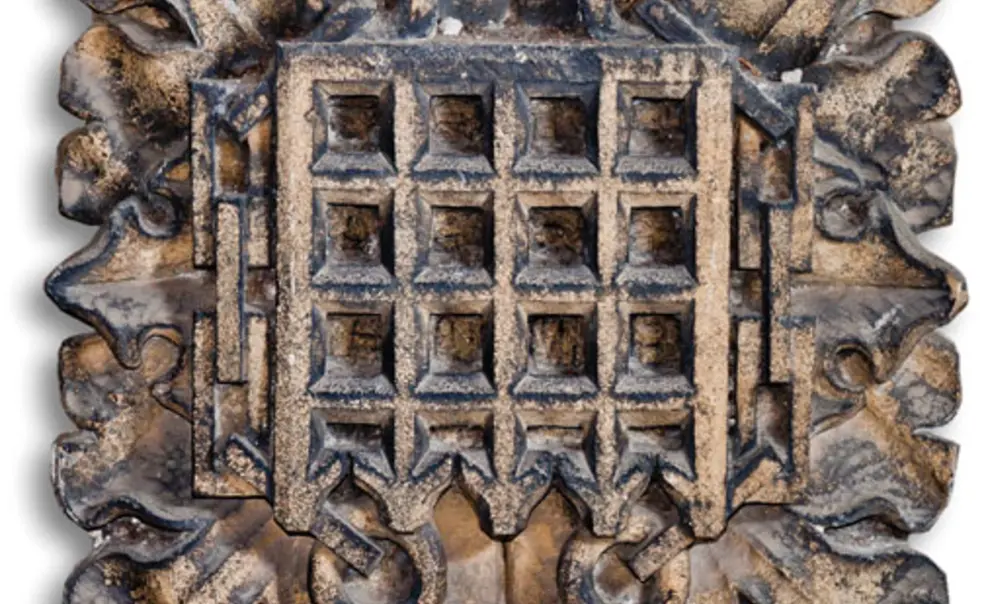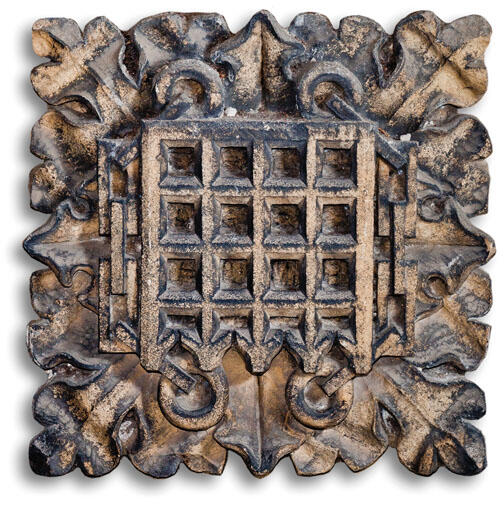From Princeton’s vault: Relic of the Blitz
What: Seventy years ago, the chamber of the House of Commons in London was gutted by a Luftwaffe incendiary bomb. The British ambassador to the United States donated a fragment to Princeton during a visit in 1944, a carved piece of Yorkshire limestone bearing the House of Commons’ emblem, a portcullis.
With this gift, the ambassador wished to thank the University for offering weekend courses for British officers during wartime. He was the famously aristocratic Earl of Halifax, Edward Wood, who upon meeting Hitler mistook him for a footman and nearly handed him his coat.
Wood’s early hope of appeasing the Nazis put him at odds with Winston Churchill (grandson of Leonard Jerome 1839, who left Princeton and graduated from Union College). Churchill sent him to Washington, D.C., when war broke out.
Such sculpture on the House of Commons, carved in the 1840s, was designed by Augustus Pugin, genius architect of the new Gothic Revival. (Stones gradually were replaced beginning in the 1920s, after they began crumbling.) That style spread to America and flourished for a century, leaving an indelible mark on Princeton’s campus. Virtually the last hurrah of transatlantic Gothic was Firestone Library, designed in the last months of World War II.
Where: Set in the wall to the right of the entrance to Firestone Library













No responses yet